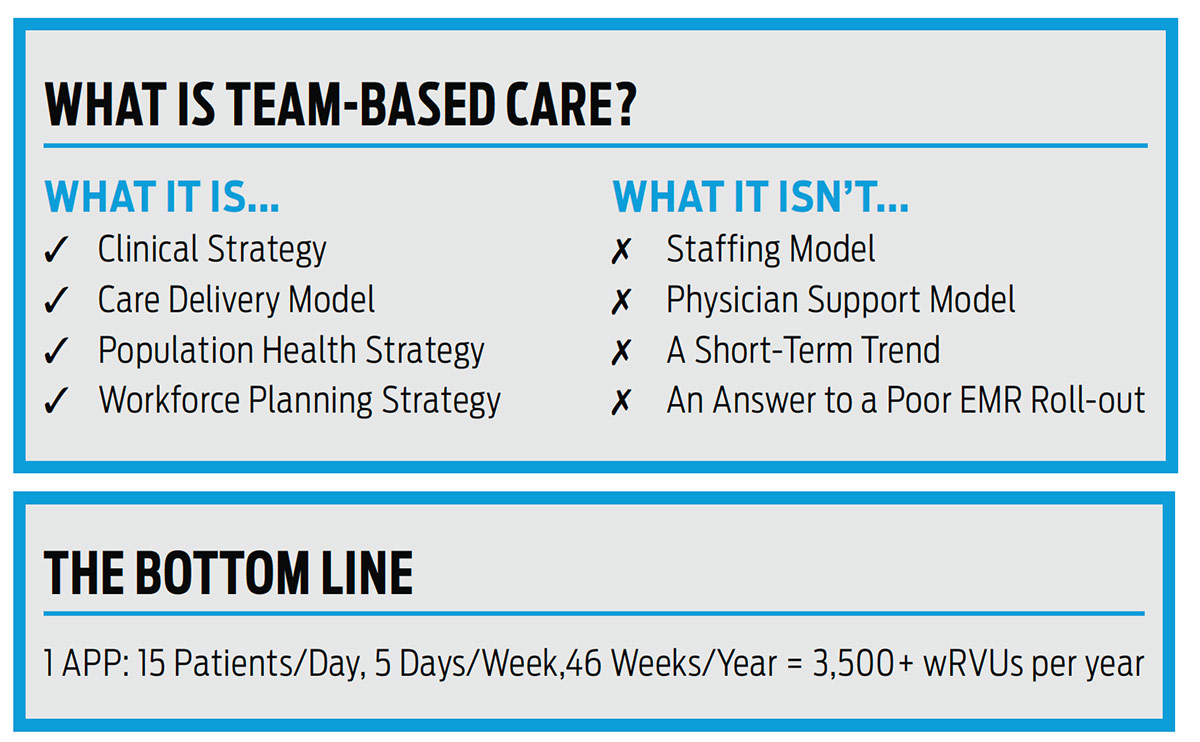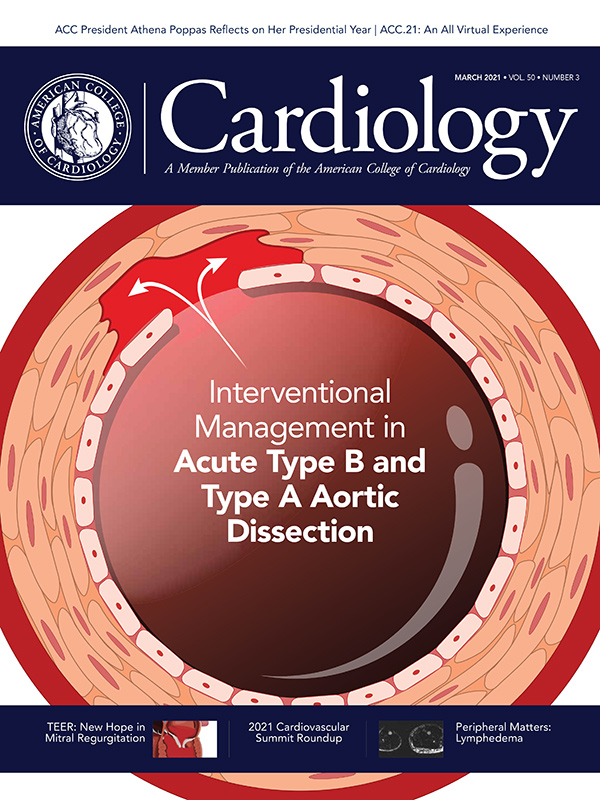Business of Medicine | Transforming Cardiovascular Care by Optimizing the Role of APPs

It has been a full year since we were plunged into the COVID-19 pandemic that changed every facet of our lives. Although many industries faced drastic changes, health care was impacted in ways that we are still adjusting to today. Care delivery is an area that changed overnight and has required cardiovascular organizations to rethink processes, technology and most importantly team roles.
The COVID-19 pandemic put a spotlight on the importance of team-based care. High performing teams were able to quickly react, adapt and innovate to provide care for patients in a rapidly changing environment. A new white paper published by MedAxiom titled, "Utilizing Advanced Practice Providers (APPs) to Achieve the Quadruple Aim" provides a deep dive into the role of APPs in cardiovascular organizations and opportunities to better utilize this valuable team member.
Achieving the Quadruple Aim
APPs have become valued members of the cardiovascular care team. However, organizations continue to be challenged with effective utilization of APPs, which is crucial for scaling high performing cardiovascular care programs. Over the last decade, specific challenges have been recognized and solutions have been identified to achieve the ultimate goal of the Quadruple Aim – high quality care, great patient experience, cost-effective care delivery and a satisfied team.
Given the economic climate, health care organizations are expected to do more with fewer resources, which has put significant pressure on their service lines to provide the best level of care for patients while focusing on affordability. Rising to the challenge requires programs to use an innovative mindset that challenges conventional models of health care delivery. As Albert Einstein once stated, "We cannot solve our problems with the same thinking we used when we created them."
Recognizing that innovative solutions do not have to equate to more technology, more time and more expenses, cardiovascular care experts have identified that the best way to improve care is to restructure the care delivery model to focus on small, dedicated teams. Rolling out a team-based care delivery model requires a frameshift across all components of the cardiovascular program that includes the utilization of APPs as highly skilled members of the care team.

To fully realize the value of APPs, changes at the organizational level include an effective governance and leadership structure that provides a voice for the APP and provides leadership at the team level while incorporating a team-based care strategy as a high priority for the organization. Economic alignment and compensation models that incentivize the team to utilize APPs as opposed to embedding competition with physicians prove to be vital for program success. It's also crucial to have a strong performance management structure that provides resources for professional growth and effective feedback for team performance to support continual optimization and improvement.
Optimal clinical performance must envelop a specific team-based care strategy for cardiovascular disease that first considers the objective of care for specific patient populations or specific episodes of care. After the objective of care has been established, the development of clear roles and responsibilities of the care team members will ensure each individual can fulfill work at the top of her or his license. Operational excellence necessitates the commitment to ensure appropriate staffing models and designated patient panels for each provider to improve patient access and to develop a cost-effective delivery model.
Economic Alignment
We have come a long way in terms of embracing the team-based care model; however, it can't just be adding new roles or facilitating a new process. There must be economic alignment designed to keep the focus on patient-centric care to eliminate competition among physicians, APPs and other team members. Leadership can resolve this conflict of interest by structuring RVUs and productivity models to eliminate competition between physicians and APPs.
Our findings, based on years of data analysis from MedAxcess, show there is a clear positive financial model when appropriately and effectively utilizing APPs.
Conclusion
Cardiovascular programs that optimize their APP utilization and implement a team-based care delivery strategy are able to meet their targets aligned with the Quadruple Aim. Programs increase their revenue and find that team-based care is a financially viable model that results in improved patient access, strong patient engagement, improve staff satisfaction, and higher quality cardiovascular care.
Download the full White Paper at MedAxiom.com/Publications.
MedAxiom's New APP Hub: Optimize Your Care Team
MedAxiom understands the important role APPs play in transforming cardiovascular care and is dedicated to propelling them forward. Now you can explore resources developed by MedAxiom experts in one central location to help optimize your care team and develop sustainable care transformation initiatives.
- Download the new APP Utilization White Paper
- Explore MedAxiom Academy Courses Designed for APPs
- Browse APP-focused videos, webinars, publications and more
- Find out how MedAxiom's Consulting Team can help your organization optimize APP utilization
Visit MedAxiom.com/APPHub
Clinical Topics: COVID-19 Hub
Keywords: ACC Publications, Cardiology Magazine, Goals, Cardiovascular Diseases, Leadership, Feedback, Patient Participation, Personal Satisfaction, COVID-19, Conflict of Interest, Cost-Benefit Analysis, Episode of Care, Motivation, Organizations, Health Workforce, Technology, Physicians
< Back to Listings

